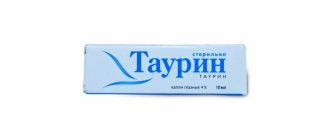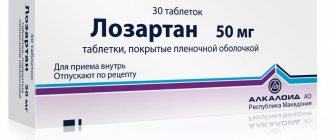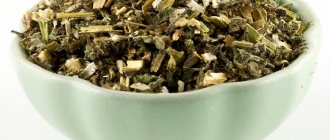Diuretics remove excess fluid from the body. Stimulate urine excretion by inhibiting the reabsorption of sodium ions in the renal canals. They have many useful properties. They are widely used in medicine for the treatment of disorders and diseases. The drugs are used for: peripheral edema, for the normal functioning of the kidneys, removal of toxins, removal of excess fluid from cavities, diseases of the heart and blood vessels.
There are several different types of diuretics, differing in chemical structure and mechanism of action. They are divided into: short-acting saline, potassium-containing, taizide. Diuretics are used for weight loss. Removes large amounts of fluid and reduces weight. They have a cleansing effect and remove decay products. They have a positive effect on the condition of the skin and the health of the body. During the period of use, you must adhere to a certain diet and exercise regularly.
History of the origin of diuretics
Over the years, scientists have tried to discover organic and inorganic substances to treat edema. In the early 16th century, weak diuretics were used. Such as sea onion and calomel. In the 20s of the last century, people began to use mercury-containing substances to reduce swelling.
In 1950, the first taizide diuretics, chlorothiazide and hydrochlorothiazide, were synthesized. They are close in chemical structure to sulfonamides. In 1960, the structure of substances was modified. More effective loop diuretics, furosemide and ethacrynic acid, have been created. Diuretics with antikaliuretic activity have been synthesized. The drugs began to be widely used in medicine to treat diseases.
Basics of treatment with diuretics
Diuretics vary in the speed of onset and severity of the diuretic effect.
Highly active diuretics that have the most rapid (within minutes) and strong diuretic effect include mannitol, furosemide and torsemide. They are used for acute, life-threatening conditions - cerebral edema (mannitol), pulmonary edema, hypertensive crisis (a sharp and strong rise in blood pressure), poisoning with water-soluble poisons. These drugs act for a short time - from 30 minutes to 4 hours.
Thiazide and thiazide-like diuretics have a moderate but long-lasting (12-18 hours) diuretic effect, which develops on average after 1-2 hours. The main indications for their use: arterial hypertension, edema in heart and kidney diseases. These drugs are usually prescribed once a day.
The diuretic effect of potassium-sparing diuretics and carbonic anhydrase inhibitors is quite weak and develops slowly (for spironolactone - within 3-5 days). Spironolactone and eplerenone are used to treat conditions associated with excess aldosterone - tumors of the adrenal cortex (aldosteromas), liver cirrhosis, heart failure.
To treat glaucoma, carbonic anhydrase inhibitors (brinzolamide, dorzolamide) are used topically in the form of eye drops.
Mechanism of action of diuretics
The main mechanism of action of diuretics is their effect on the kidneys. First of all, on the structural and functional unit or nephron, where the processes of glomerular filtration, tubular reabsorption and secretion occur. To better understand the action of diuretics, it is necessary to consider the process of kidney functioning and the mechanism of urine formation.
Each kidney contains approximately 1 million nephron formations that do not communicate with each other. They consist of a vascular glomerulus (glomerulus), a glomerular capsule and tubules. In the renal glomerulus, plasma is filtered from the capillaries into the capsule cavity. The endothelium of the capillaries does not allow the penetration of blood elements and proteins.
The resulting filtrate is called primary urine. Subsequently, it penetrates the kidney tubules. The filtration process in the kidneys occurs due to the difference between the arterial and oncotic pressure of the blood plasma. A decrease in blood pressure leads to a decrease in the filtration rate in the kidneys. Increasing blood pressure increases the filtration rate.
The glomerular filtration rate depends not only on the blood supply to the kidneys, but also on the number of functioning nephrons. On average, glomerular filtration in an adult is 100 ml per minute. Every day, the human body filters about 200 liters of liquid. Urine is released on average about 2 liters. About 99% of primary urine is reabsorbed in the tubules.
The reabsorption process occurs throughout the nephron. To increase the amount of urine excreted, the glomerular filtration rate must be increased. The process of urine formation ends in the distal nephron and collecting ducts. Transport processes are regulated by hormonal influences. Taking diuretics helps increase the rate of urine formation. Reduce the amount of primary urine that is affected by the reabsorption process.
The clinical use of diuretics almost universally preceded the localization of their site of action. The consequence of diuretic specificity predicts clinical use and side effects, and the proximity of sodium transporters, one to another, often dictates the potency or effectiveness of the diuretic. All diuretics act by inhibiting the normal transport of sodium from the filtrate into the renal tubular cells. This movement of sodium into renal epithelial cells from the apical side is facilitated by a number of transporters, the function of which in turn depends on adenosine triphosphate (ATP), a Na-K dependent cotransporter on the basolateral side of the cell. Growing understanding of the physiology of sodium transport has generated new opportunities for the development of diuretics.
Features of treatment with diuretics
The selection of a diuretic for a particular patient is carried out only by a doctor, since drugs in this group have a fairly wide range of features of action, side effects, and can also enter into adverse interactions with other drugs (for example, antibiotics of the aminoglycoside and cephalosporin groups, sulfonamide drugs, non-steroidal anti-inflammatory and antiarrhythmic drugs, cardiac glycosides, etc.).
Diuretics with pronounced and moderate diuretic effects actively remove potassium from the body, which can lead to the development of hypokalemia and, as a consequence, muscle weakness and cardiac dysfunction. To prevent such conditions during long-term use of loop and thiazide diuretics, it is additionally recommended to use potassium supplements.
Diuretics enhance the hypotensive effect of antihypertensive drugs (lowering blood pressure). There is even a whole line of combination drugs for the treatment of arterial hypertension (hypertension), which include an antihypertensive agent and a thiazide or thiazide-like diuretic.
Potassium-sparing diuretics are strictly prohibited from being taken together with antihypertensive drugs from the group of angiotensin-converting enzyme inhibitors (enalapril, captopril, lisinopril, etc.), since there is a risk of developing hyperkalemia - an increase in potassium in the blood. Excess potassium is extremely dangerous because it can lead to heart rhythm disturbances (arrhythmias).
Natural Diuretics
A natural diuretic diet is prescribed when there are contraindications to taking medications. People suffering from problems of the gastrointestinal tract, heart, and respiratory system. Experts include diuretic fruits, vegetables and herbs in weight loss diets.
Products with a diuretic effect:
- Watermelon.
- Cherry.
- Cranberry.
- Blueberry.
- Lemon.
- Melon.
- A pineapple.
- Pomegranate.
- Quince.
- Cabbage.
- Tomatoes.
- Beet.
- Onion.
- Carrot.
- Celery.
- Cucumber.
- Parsley dill.
- Ginger.
- Green tea.
- Nettle.
The products have a mild diuretic effect. Rich in vitamins, minerals and antioxidants. It must be consumed raw, prepared in juices and smoothies. During heat treatment, cooking and long-term storage, the energy value decreases.
Types of diuretics
The main purpose of diuretics is to speed up urine excretion by the kidneys and slow down reabsorption. Different types of diuretics differ from each other in their mechanisms of action. Diuretics remove not only excess fluid from the body, but also important electrolytes. Such as: calcium, magnesium, sodium, potassium, chlorine. It is important to maintain a balance and not increase the established dosages on your own without consulting a specialist.
There are several groups of diuretic drugs:
1. Potassium-sparing.
They have a mild diuretic effect. They act by blocking sodium channels in the epithelium. Reduces potassium excretion by the kidneys. Used in combination with other drugs to stimulate the diuretic and hypotensive effects of thiazide and loop diuretics. Minimize potassium loss. Increase the excretion of sodium, water, salts.
2.Loop
They have a strong diuretic effect. Fast-acting diuretics come in the form of chemically different compounds. They contain a sulfonamide group in their structure. They act in the thick segment of the ascending loop of Henle, located in the kidney. They have a relaxing effect on the smooth muscles of blood vessels. Increases renal blood flow. Reduce the amount of intercellular fluid. Increases the excretion of sodium, chlorine, potassium, magnesium, and calcium from the body.
3. Taizidnye.
Contains sulfonamide derivatives of benzothiadiazine and non-thiazide sulfonamides. They block the transport of calcium and sodium in the distal convoluted tubules. Stimulates the synthesis of prostacyclin.
4. Osmodiuretics.
They have a specific mechanism of action. They delay the reabsorption of water. Does not affect potassium excretion.
Indications for use
Diuretics are used for conditions associated with fluid retention in the body: edema due to diseases of the heart, kidneys, liver - heart failure, renal failure, cirrhosis of the liver. Osmotic and loop diuretics are also used for life-threatening edema - cerebral edema and pulmonary edema (when a quick and pronounced effect is needed).
Diuretics are used in the treatment of arterial hypertension (hypertension), as well as for increased intraocular pressure - glaucoma.
Osmotic and loop diuretics are prescribed for acute poisoning with water-soluble poisons - to accelerate the removal of toxins from the body, hypertensive crisis, as well as oliguria (reduced urination) for kidney injuries, large blood losses and burns.
Carbonic anhydrase inhibitors are also used in the complex treatment of epilepsy, as well as increased intracranial pressure, sleep apnea syndrome (breathing stops during sleep).
Thiazide diuretics are additionally used in the treatment of diabetes insipidus (deficiency of the posterior pituitary hormone vasopressin).
Diuretics of plant origin are also prescribed for inflammatory diseases of the kidneys and urinary tract (pyelonephritis, pyelitis, cystitis).
Admission rules
Before taking diuretics, you should consult a specialist. The daily dosage of the drug for the treatment of diseases is prescribed by the doctor. When using diuretics for weight loss, you must follow a drinking regime. To avoid dehydration, you need to drink at least 2 liters of water daily. Maintain a proper and balanced diet. Avoid junk and fried foods, sugar, salt, and alcoholic beverages. Every 2-3 days, weigh yourself in the morning and control your weight. If you feel unwell and side effects occur, you should stop taking it.
Contraindications and indications for use
Indications:
- Urinary tract diseases.
- Arterial hypertension.
- Renal dysfunction.
- Edema.
- Moist rales in the lungs.
- Rapid weight gain.
- Ascites.
- Hydrothorax.
- Endocrine diseases.
- Increased liver size.
Contraindications:
- Elevated uric acid levels.
- Diabetes.
- Tuberculosis.
- Diseases of the liver, kidneys.
- Pregnancy.
- Lactation period.
- Individual intolerance to components.
- Hepatitis.
- Thrombosis.
- Cancer.
Side effects:
- Dizziness.
- Weakness.
- Fainting.
- Dehydration.
- Nausea.
- Disorders of the gastrointestinal tract.
- Diarrhea.
- Decreased libido.
- Skin rashes.
- Increased blood cholesterol levels.
"Hurry slowly." Long-acting diuretics for long-term therapy of outpatients
The main classes of drugs widely used today came into therapeutic practice in the form of short-acting drugs. This applies to beta blockers (BBs), angiotensin-converting enzyme inhibitors (ACEIs), and dihydropyridine calcium channel blockers (CCBs). Second half of the 20th century was marked by a significant breakthrough in the treatment of arterial hypertension (AH) due to the introduction of propranolol [1], and later nifedipine [2] and captopril [3]. Further clinical experience with the use of these drugs has made significant adjustments to the tactics of their prescription. It turned out to be extremely difficult to ensure regular 3-4 times a day medication intake for patients not undergoing hospital treatment. Attempts to prescribe propranolol once a day instead of three times were not very successful - even with a comparable antihypertensive effect, stable suppression of neurohumoral systems was achieved only with three doses [4]. The enthusiastic tone of the first publications concerning nifedipine also soon gave way to a more cautious one [5]. It was shown that the rapid and potent effect of this antihypertensive agent was accompanied by significant activation of the renin-angiotensin-aldosterone (RAAS) and sympathoadrenal systems (SAS) [6], which could have a negative impact on long-term prognosis. The solution to most of these problems came with the creation of drugs that have a long period of action. Suppression of neurohumoral systems during the day prevented their “rebound” activation, ensured stable control of blood pressure and significantly improved the quality of life of patients and their adherence to treatment [7–10]. Currently, no one doubts that in the outpatient management of patients, preference should be given to long-acting BBs, CCBs and ACEIs, and short-acting drugs of these classes retain their positions mainly in emergency situations.
The history of diuretics, one of the oldest classes of drugs used in the treatment of cardiovascular diseases, has not been so straightforward. At the end of the 1950s. Chlorothiazide, hydrochlorothiazide (HCTZ), and chlorthalidone (CT) were reported almost simultaneously. These drugs, having a similar chemical structure, differ significantly in pharmacokinetics. If thiazides can be classified as short-acting drugs, the half-life of CT, a thiazide-like diuretic, can reach 40–60 hours.
Data on a positive effect on the prognosis for patients with hypertension were obtained for both HCTZ and chemotherapy. At the end of the 1960s. placebo-controlled studies have been conducted showing the ability of diuretics to reduce cardiovascular mortality [11, 12]. The data obtained indicated the need to treat only 2.7 patients to prevent one cardiovascular complication (CVD). And currently, diuretic therapy has the lowest price/effectiveness ratio of all methods of primary prevention, second only to a diet that limits salt intake [13].
The effect of chemotherapy-based therapy on the incidence of stroke and other CV events in 4736 patients with isolated systolic hypertension was studied in the SHEP study. Compared with placebo, chemotherapy reduced the incidence of stroke by 36%, myocardial infarction by 27%, chronic heart failure (CHF) by 54%, and the total number of cardiovascular events by approximately 32% [14]. The ALLHAT trial [15, 16] randomized more than 42,000 patients with hypertension and either known cardiovascular disease or risk factors for its development. In this study, chemotherapy was not inferior to such powerful competitors as the ACE inhibitor lisinopril and the CCB amlodipine, either in its effect on the combined primary endpoint or on mortality.
It should be noted that other data have been published, according to which diuretics showed less effectiveness than other classes of antihypertensive drugs. In the ACCOMPLISH study [17], 11,506 hypertensive patients at high risk for CV events received either benazepril with amlodipine or benazepril with HCTZ for 36 months. The reduction in the relative risk of developing cardiovascular events was 20% greater in the group of patients receiving a combination of amlodipine and benazepril, despite a similar decrease in office blood pressure (BP). The failure of HCTZ may have been due to the fact that the drug was used in this study at lower doses (12.5–25 mg) than those used in the placebo-controlled trials. Moreover, in the SHEP study, chemotherapy at a dose of more than 12.5–25.0 mg controlled blood pressure in 50% of patients for several years without significant adverse effects [14]. In vitro, CT is 2 times more effective than HCTZ [18]. However, an analysis of clinical studies showed that an equivalent antihypertensive effect is achieved with 3 times higher doses of HCTZ [19]. As the main reason for this superiority of CT MA, Peterzan et al. They call differences in the pharmacokinetics of drugs - a significant difference in the duration of their action.
Loop diuretics (LDs) are traditionally used in the treatment of patients with uncomplicated hypertension to a lesser extent than thiazide-type diuretics. This circumstance is probably explained not only by the lack of studies indicating the influence of PD on prognosis, but also by existing stereotypes. For example, low doses of HCTZ are widely prescribed by physicians and cardiologists to lower blood pressure, while no data have been obtained confirming their positive effect on the risk of developing CV events in patients with hypertension. PD is generally preferred when a patient develops cardiac or renal failure. The situation changed somewhat with the advent of the late 1980s. torasemide, a PD with a long half-life. A number of studies have been conducted to examine its antihypertensive effect and tolerability. Torsemide was used in doses that did not lead to a significant diuretic effect (2.5–5 mg/day) in monotherapy or in combination with other antihypertensive drugs. Diastolic pressure has been demonstrated to decrease to target values after 8–12 weeks of treatment in 70–80% of patients. At doses of 10 mg/day, diastolic pressure normalized in more than 90% of patients [20]. Treatment with torasemide was started in most cases with low doses. In cases where it was not possible to achieve optimal blood pressure control, the dose was increased. In light of the discussion on the importance of the duration of action of a diuretic drug, the work of I. Achhammer et al. is of interest. [21], which demonstrated comparable antihypertensive effects of torsemide and chlorthalidone (Fig. 1).
It is known that prolonging the circulation period of a diuretic in the blood can reduce peak natriuresis, thereby preventing “rebound” sodium reuptake and hyperactivation of the RAAS and SAS [22, 23]. This effect can be achieved either by prolonging the half-life or by creating sustained-release dosage forms. Torsemide itself has a longer half-life compared to Furosemide - 180–240 minutes versus 90 minutes [24], but, in addition, its new form with a slow release of the drug (Britomar) has appeared relatively recently [25]. The matrix tablet allows you to further increase the time to reach the maximum concentration of torasemide in the blood [26], thereby minimizing the activation of neurohumoral systems (Fig. 2).
In clinical practice, such differences in the pharmacokinetics of immediate- and sustained-release torasemide are realized in a more pronounced effect on the blood pressure of the latter [27] (Fig. 3).
There is no doubt that randomized trials are required to evaluate the impact of both PD and low-dose HCTZ on prognosis. However, the advent of sustained-release torasemide has significantly expanded the possibilities of using PDs as antihypertensive drugs. In the USA, torasemide in small doses has been recommended since the 6th (1993) report of the Expert Committee of the US National Heart, Lung and Blood Institute for long-term treatment of hypertension [28].
Nevertheless, the main area of application of PD in cardiology has been and remains heart failure. In Russian recommendations on CHF [29], the place of diuretics is defined as the place of drugs “used in certain clinical situations.” First of all, we mean patients who have signs of fluid retention: edema, shortness of breath, moist rales in the lungs, etc. However, the need to prescribe PD to patients without clinical manifestations of congestion, but with signs of increased left ventricular filling pressure, is currently being discussed [30 ].
Noteworthy is the fact that in the recommendations for CHF treatment with diuretics, evidence class IC is assigned. This means that “this method is useful and effective.” However, the “C” label assumes that “the recommendation is based on expert consensus and/or the results of small studies, retrospective studies, registries.” Indeed, it is unlikely that a doctor who had to treat a patient with CHF in a state of decompensation would have doubts about the need to use diuretics. On the other hand, randomized placebo-controlled trials with diuretics in CHF have not been conducted and most likely will not be conducted. The largest published comparative study with the TORIC PD examined the effect of torasemide versus furosemide (or other diuretics) on the clinical course and mortality of patients with CHF [31]. It included 1350 patients with FC II–IV CHF, the observation period was 12 months, the average dose of Furosemide was 40 mg (it was used in more than 85% of patients), torsemide 10 mg. Torasemide was superior to Furosemide both in its effect on the frequency of hospitalizations and on the clinical condition of patients. But the most striking differences were in the effects on total, cardiovascular and sudden mortality (Fig. 4).
In many studies in patients with CHF, diuretics with a short half-life - Furosemide and thiazides - were prescribed twice a day to achieve better effect [32]. However, an attempt to attribute the benefits of torasemide only to the duration of its action would look tendentious. This drug has a number of pleiotropic effects. Its antialdosterone activity prevents the development of fibrosis and excess potassium excretion [33, 34]. It is impossible to single out the predominant influence of different mechanisms of action of a drug on the prognosis, but when talking about ensuring the quality of life of patients, the duration of action of the drug takes on independent significance. In a number of comparative studies, patients with CHF reported more comfortable excretion of excess fluid on torsemide than on Furosemide [24, 35, 36]. A “pure” experiment can be considered a comparison of immediate-release torasemide with a drug in which the same torasemide molecule is packaged in a hydrophilic matrix, ensuring its consistent absorption in the intestine. The sustained-release form (Britomar) was significantly less restrictive in daily activities in patients with more severe natriuresis [37].
Conclusion
The requirements for long-term diuretic therapy are not original - high efficiency, maximum safety, good tolerability. Modern diuretics largely provide the required diuretic response. However, achieving the last two criteria in real practice is often difficult due to limited laboratory monitoring of electrolyte levels and low patient adherence to treatment associated with disruption of the usual lifestyle when taking diuretics. In the conditions of outpatient management of patients, it is possible to approach this level only by prescribing diuretics with a long period of action. “Festina lente” - hurry up slowly.
Literature
- Richards F. Propranolol in hypertension // Am J Cardiol. 1966 Sep; 18(3):384–386.
- Olivari M., Polese A., Fiorentini C. et al. Nifedipine, a new antihypertensive with rapid action // Clin Pharmacol Ther. 1977; 22 (5 Pt 1): 528–532.
- Rubin B., Antonaccio M., Horovitz Z. Captopril (SQ 14,225) (D-3-mercapto-2-methylpropranoyl-L-proline): a novel orally active inhibitor of angiotensin-converting enzyme and antihypertensive agent // Prog Cardiovasc Dis . 1978; 21 (3): 183–194.
- Van den Brink G., Boer P., van Asten P. et al. One and three doses of propranolol a day in hypertension // Clin Pharmacol Ther. 1980; 27 (1): 9–15.
- Stone P., Antman E., Muller J. et al. Calcium channel blocking agents in the treatment of cardiovascular disorders. Part II: Hemodynamic effects and clinical applications // Ann Intern Med. 1980; 93(6):886–904.
- Corea L., Miele N., Bentivoglio M. et al. Acute and chronic effects of nifedipine on plasma renin activity and plasma adrenaline and noradrenaline in controls and hypertensive patients // Clin Sci (Lond). 1979; 57 Suppl 5: 115 s-117 s.
- Calcium antagonists in cardiovascular disease: rationale for 24-hour action. Proceedings of an official satellite symposium and papers on amlodipine presented at the 25th Anniversary International Symposium on Calcium Antagonists in Hypertension. Basel, Switzerland, February 11–12, 1988 // J Cardiovasc Pharmacol. 1988; 12 Suppl 7:S1–114.
- Buhler F., Burkart F., Lutold B. et al. Antihypertensive beta blocking action as related to renin and age: a pharmacologic tool to identify pathogenetic mechanisms in essential hypertension // Am J Cardiol. 1975; 36(5):653–669.
- Van den Broek S., de Graeff P., van Veldhuisen D. et al. Clinical and neurohumoral differences between spirapril and captopril in mild to moderate chronic congestive heart failure // J Card Fail. 1997; 3 (3): 165–171.
- Ruszty L., Hidas I., Ivanyi J. et al. Evaluation of captopril-enalapril replacement therapy in hypertensive patients under ambulatory blood pressure monitoring // Orv Hetil. 1996; 137(51):2851–2854.
- Effects of treatment on morbidity in hypertension. Results in patients with diastolic blood pressure averaging 115 through 129 mm Hg. Veterans Administration Cooperative Study Group on Antihypertensive Agents // JAMA. 1967; 202:1028–1034.
- Effects of treatment on morbidity in hypertension. Results in patients with diastolic blood pressure averaging 90 through 114 mm Hg. Veterans Administration Cooperative Study Group on Antihypertensive Agents // JAMA. 1970; 213:1143–1152.
- Cobiac L., Magnus A., Lim S. et al. Which interventions offer best value for money in primary prevention of cardiovascular disease? // PLoS One. 2012; 7(7):e41842.
- SHEP cooperative research group. Prevention of stroke by antihypertensive drug treatment in older persons with isolated systolic hypertension: final results of the systolic hypertension in the elderly program (SHEP) // JAMA. 1991; 265:3255–3264.
- Major outcomes in high-risk hypertensive patients randomized to angiotensin-converting enzyme inhibitor or calcium channel blocker vs diuretic: the antihypertensive and lipid-lowering treatment to prevent heart attack trial (ALLHAT) // JAMA. 2002; 288:2981–2997.
- ALLHAT Officers and Coordinators for the ALLHAT Collaborative Research Group. Diuretic versus alpha-blocker as first-step antihypertensive therapy. Final results from the antihypertensive and lipid-lowering treatment to prevent heart attack trial (ALLHAT) // Hypertension. 2003; 42: 239–246.
- Jamerson K., Weber M., Bakris G. et al. Benazepril plus amlodipine or hydrochlorothiazide for hypertension in high-risk patients // N Engl J Med. 2008; 359:2417–2428.
- Beaumont K., Vaughn D., Fanestil D. Thiazide diuretic drug receptors in rat kidney: identification with metolazone // Proc Natl Acad Sci USA. 1988; 85:2311–2314.
- Peterzan M., Hardy R., Chaturvedi N. et al. Meta-analysis of dose-response relationships for hydrochlorothiazide, chlorthalidone, and bendroflumethiazide on blood pressure, serum potassium, and urate // Hypertension. 2012; 59(6):1104–1109.
- Brater D. Benefits and risks of torasemide in congestive heart failure and essential hypertension // Drug Saf. 1996; 14: 104–120.
- Achhammer I., Metz P. Low dose loop diuretics in essential hypertension. Experience with torasemide // Drugs. 1991; 41(Suppl. 3): 80–91.
- Reyes A. Effects of diuretics on renal excretory function // Eur Heart J. 1992; 13 Suppl G: 15–21.
- Arutyunov G.P., Oganezova L.G., Dragunov D.O. Relationship between the half-life of a loop diuretic, the severity of natriuresis and central hemodynamic parameters in patients with CHF (pilot study) // Heart failure. 2012; 13 (4): 222–227.
- Vargo D., Kramer W., Black P. et al. Bioavailability, pharmacokinetics, and pharmacodynamics of torsemide and furosemide in patients with congestive heart failure // Clin. Pharm. Ther. 1995; 57:601–609.
- Lyseng-Williamson K. Torasemide Prolonged Release // Drugs. 2009; 69(10):1363–1372.
- Barbanoj M., Ballester M., Antonijoan R. et al. Comparison of repeated-dose pharmacokinetics of prolonged-release and immediate-release torasemide formulations in healthy young volunteers // Fundamental & Clinical Pharmacology. 2009; 23: 115–125.
- Roca-Cusachs A., Aracil-Vilar J., Calvo-Gomez C. et al. Clinical effects of torasemide extended release in mild-to-moderate hypertension: A randomized noninferiority trial versus torasemide immediate release // Cardiovasc Ther. 2008; 26:91–100.
- Joint National Committee on Detection, Evaluation, and Treatment of High Blood Pressure. The sixth report of the Joint National Committee on Detection, Evaluation, and Treatment of High Blood Pressure (JNC VI) // Arch Intern Med. 1997; 157:2413–2446.
- National recommendations of VNOK and OSSN for the diagnosis and treatment of CHF (III revision) // Heart failure. 2010; 11, No. 1 (57).
- Azizova A. G., Ovchinnikov A. G., Ageev F. T. Comparative effect of torasemide and furosemide on the clinical status and diastolic function of the left ventricle in patients with compensated heart failure and high filling pressure of the left ventricle // Heart failure. 2011; 6:326–332.
- Cosyn J., Dyez J. Torasemide in chronic heart failure; results of the TORIC study // The European Journal of Heart Failure. 2002; 4:507–513.
- Jentzer J., DeWald T., Hernandez A. Combination of Loop Diuretics With Thiazide-Type Diuretics in Heart Failure // Journal of the American College of Cardiology. 2010; 56(19):1527–1534.
- Lopez B., Querejeta R., Gonzalez A. et al. Effects of loop diuretics on myocardial fibrosis and collagen type I turnover in chronic heart failure // J Am Coll Cardiol. 2004; 43:2028–2035.
- Reyes A., Leary W. Response of serum potassium concentration to the diuretic torasemide: formal assessment // AHJ. 2002; 15 (4): 38 A.
- Muller K., Gamba G., Jaquet F. et al. Torasemide vs. furosemide in primary care patients with chronic heart failure NYHA II to IV - efficacy and quality of life // Eur J Heart Fail. 2003; 5(6):793–801.
- Noe L., Vreeland M., Pezzella S. et al. A pharmaco-nomical assessment of torasemide and furosemide in the treatment of patients with congestive heart failure // Clin Ther. 1999; 21(5):854–856.
- Barbanoj M., Ballester M., Antonijoan R. et al. Comparison of repeated-dose pharmacokinetics of prolonged-release and immediate-release torasemide formulations in healthy young volunteers // Fundamental & Clinical Pharmacology. 2009; 23: 115–125.
Y. A. Orlova, Doctor of Medical Sciences, Professor
Medical Research and Educational Center of the State Budgetary Educational Institution of Higher Professional Education, Moscow State University named after. M. V. Lomonosova, Moscow
Contact Information









